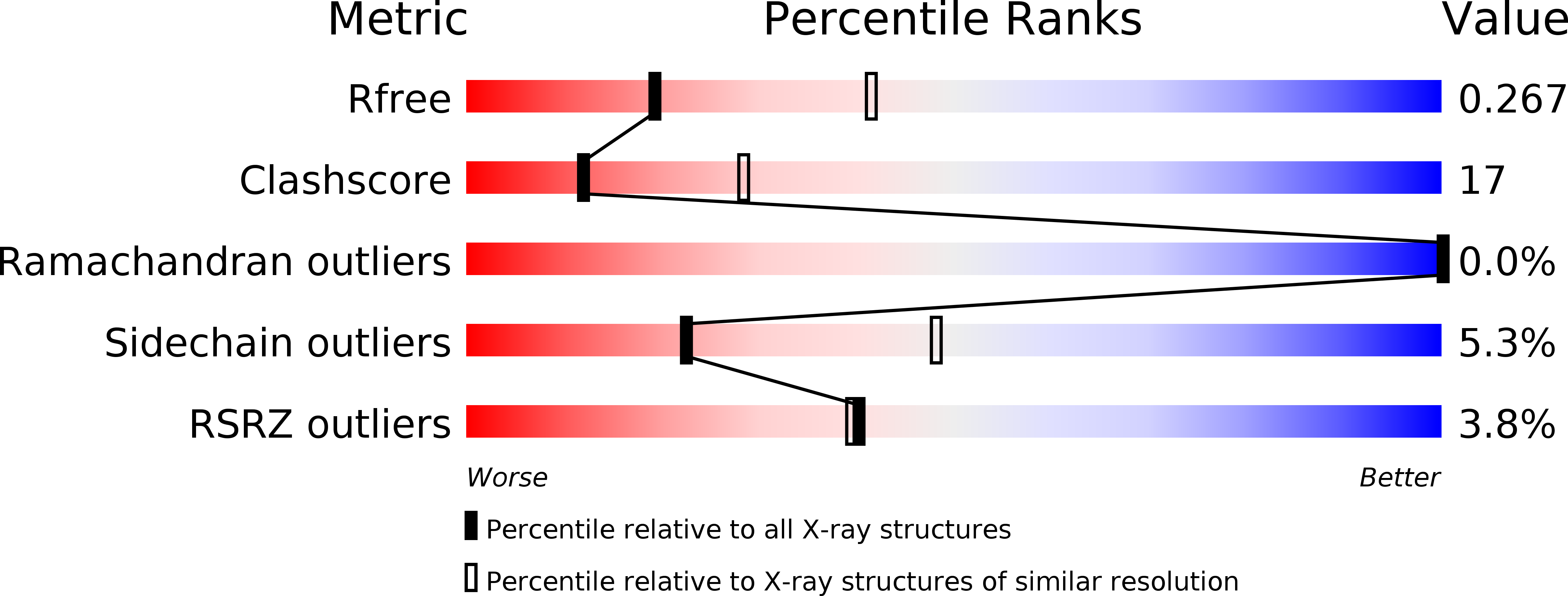
Deposition Date
2010-06-25
Release Date
2011-05-18
Last Version Date
2024-10-16
Entry Detail
PDB ID:
3NOC
Keywords:
Title:
Designed ankyrin repeat protein (DARPin) binders to AcrB: Plasticity of the Interface
Biological Source:
Source Organism:
Escherichia coli (Taxon ID: 83333)
synthetic construct (Taxon ID: 32630)
synthetic construct (Taxon ID: 32630)
Host Organism:
Method Details:
Experimental Method:
Resolution:
2.70 Å
R-Value Free:
0.26
R-Value Work:
0.24
R-Value Observed:
0.24
Space Group:
P 21 21 21


